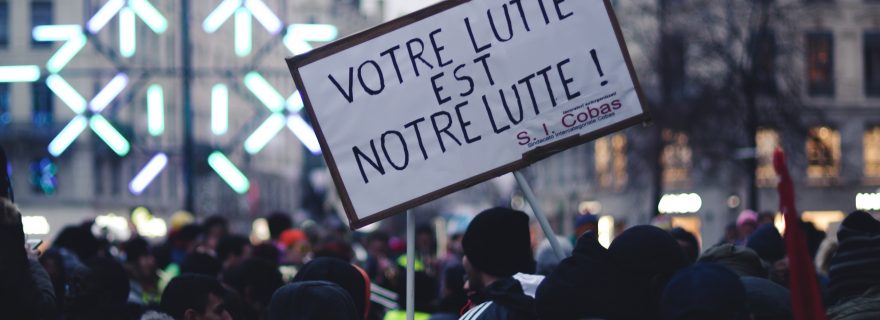Yellow Vests
What kind of political protest are we facing? Above all, the Yellow Vests reveal a crisis of political legitimacy and political representation.
The clouds of tear gas used by French riot police to drive back the Yellow Vests not only obscured sight of the Arce de Triumph, but also of the only relevant question: what kind of political protest are we facing? Of course, a plethora of political entrepreneurs were ready to jump on the bandwagon to appropriate the movement and instrumentalize it for their own political agenda. It is all about immigration! No it is about capitalism! Populism! Anarchists looking for trouble! Climate policies! Concerned citizens! The simple answer is: we do not know yet.
What we do know, however, is that the Yellow Vests are not a totally new political phenomenon. The last decade was the scene of eclectic social movements, hard to categorize in familiar political rubrics, fluid, full of - sometimes - contradictory grievances and demands, without a program and without a clear, formalized structure, spokespersons or leaders. Occupy, the Indignados, and Sovereign Citizens also reflected an eclectic anti-system feeling and a strong anti-establishment sentiment flavored with conspiracy theories. As already predicted by Castells in 1997, the new face of protest is ‘outbursts of revolt and violence without a clear meaning, direction or ideological motivation - diffuse anger, resentment, unease, conspiracism.’ Or in the words of Žižek, commenting on the 2011 riots in the United Kingdom: 'Zero-degree protest, a violent action demanding nothing (....) Opposition to the system can no longer articulate itself in the form of a realistic alternative, or even as a utopian project, but can only take the shape of a meaningless outburst (...) The spirit of revolt without revolution.’
This post-political and post-democratic constellation - as coined for instance by Chantal Mouffe and Colin Crouch - is the relevant background for understanding phenomena like the Yellow Vests. Both 'post-politics' and 'post-democracy' refer to the political constellation in which all the formal structures of representative liberal democracy are still in place, but the political menu to choose from is highly restricted and the political representation and participation structures that connected society, politics and the state have become rather obsolete. As a result, the system itself became part of new antagonistic relations: the entire political system is being depicted as a hostile entity opposite to the population, instead as an arena in which competing political positions can be articulated. Above all, the Yellow Vests reveal a crisis of political legitimacy and political representation.
The irony is that the new protest movements are the result of post-politics and post-democracy, but were not able to escape themselves this post-political configuration. Protesters are more united by what they oppose than what they favor. The common denominator is the idea that the political system and the political class is corrupted and therefore it makes no sense to try to use the established mechanisms or channels of participation or protest or to politicize the societal problems in terms of left or right politics. It is the political-sociological question whether these eclectic and post-political critical positions should be analyzed and understood as aberrations of original political ideologies, or as new developing ideological discourses.
For political sociologists, social movement theory is useful in analyzing these new movements and try to make sense of it. Studying and analyzing collective identity narratives (the formation of a sense of 'we' and 'them'), framing strategies (identifying problems, outlining potential solutions) and boundary work (highlighting the differences between the inside and the outside in order to foster a collective identity) are well-established avenues to research the new kids on the protest block.


